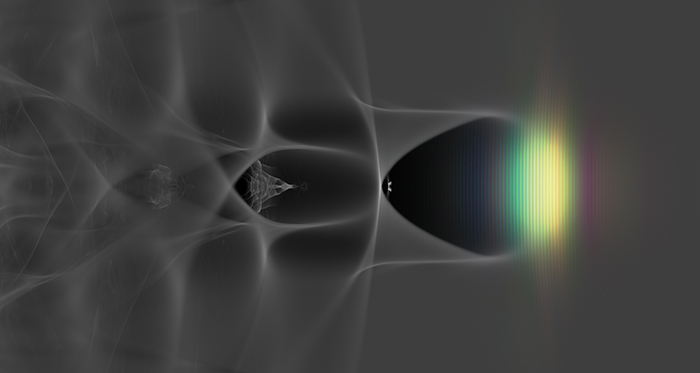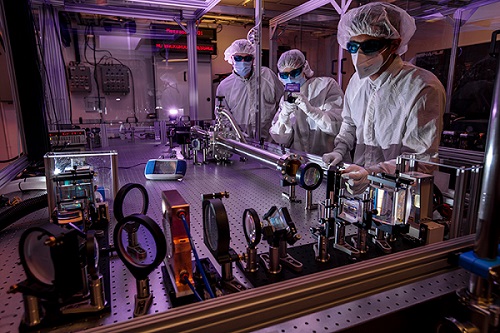Scientists at the Lawrence Livermore National Laboratory (LLNL) National Ignition Facility (NIF) are leading an initiative that will use high-power lasers to accelerate the time needed to capture muon images. Muons are naturally occurring subatomic particles that can penetrate very dense material far deeper than x-rays.
As a result, muon imaging enables scientists to capture images of nuclear reactors, volcanoes, tsunamis, and hurricanes. The process, however, is slow; due to the low flux of naturally occurring muons, the images require exposure times on the order of months.
The Defense Advanced Research Projects Agency (DARPA)-funded initiative, called Intense and Compact Muon Sources for Science and Security (ICMuS2), intends to rapidly generate muons to reduce the required exposure time.
“This project is a grand challenge for particle physics detection,” said John Harton of the high-energy physics group in the Colorado State University Physics Department. Harton will lead the CSU team tasked with developing the muon detectors for the collaborative undertaking.
“The muon particles are outnumbered by huge factors by other particles, and we are using all the tools in the box to sift them out,” he said.

A key step in the production of muons: An ultra-intense short laser pulse accelerates electrons in the wake it leaves behind while propagating through a plasma. Simulation by LLNL’s Josh Ludwig, in collaboration with University of Maryland and Lawrence Berkeley National Laboratory partners, on the Lassen HPC cluster supported by LLNL’s Computing Grand Challenge Program for the ICMuS2 project. Courtesy of LLNL.
The ICMuS2 initiative will develop a technical design for a portable, laser-based muon emitter with orders of magnitude greater flux than naturally occurring muons that can be used in imaging across a wide range of applications. These include special nuclear materials detection, mining, and geophysics. In addition to laser development, the project will additionally combine high-energy particle physics, plasma physics, advanced numerical simulations on high-performance computing systems, and systems engineering and integration, said Brendan Reagan, of NIF and the Photon Science Advanced Photon Technologies program.
Work will be carried out in partnership with Extreme Light Infrastructure ERIC (ELI) at the ELI Beamlines Facility in the Czech Republic, CSU, University of Maryland (UMD), Lockheed Martin, XUV Lasers, and Lawrence Berkeley National Laboratory (LBNL). LLNL is also participating in a separate LBNL-led effort awarded under the MuS2 Program.

ICMuS2 LLNL team members work on a prototype laser system that will be developed through this effort. Courtesy of Jason Laurea/LLNL.
Initial experiments will be conducted using UMD-developed plasma waveguides at CSU’s Advanced Laser for Extreme Photonics high-rep-rated petawatt laser facility. High-energy acceleration and muon generation experiments will be conducted at ELI Beamlines using its L4-Aton 10-PW laser system.
The first phase of this four-year program will focus on proof-of-principle experiments and making a clear demonstration of laser-produced muons. The second phase will seek to demonstrate high-energy muon production along with a design for a transportable muon source.
In addition, aspects of this initiative build upon the Big Aperture Thulium laser technology developed through LLNL’s Lab Directed Research and Development program and investments in laser-driven accelerators made by the U.S. Department of Energy Office of Science’s Offices of High Energy Physics and Accelerator Research & Development and Production.